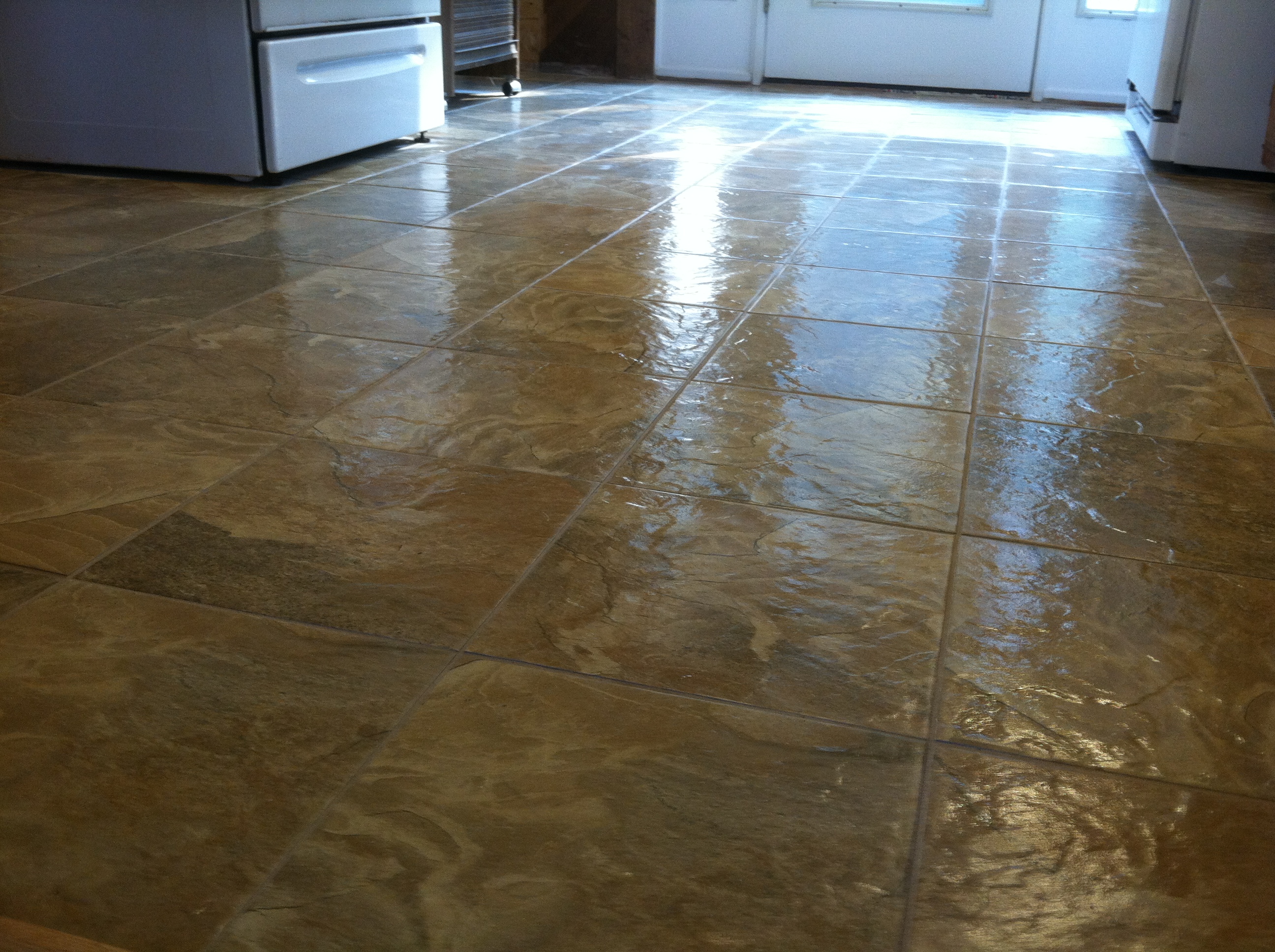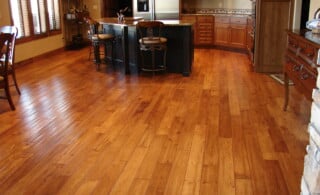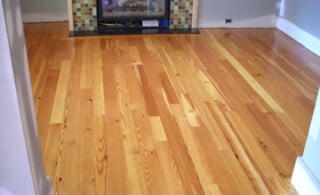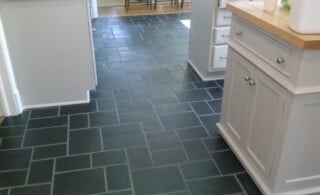
Though it is often confused with vinyl, linoleum is a completely different material. It has been around for about 150 years and is made of natural materials. Linoleum flooring is made up of linseed oil (the main ingredient), wood or cork powder, and ground stone. It is a recyclable material, and is available in partially recycled content.
Benefits of Linoleum Flooring
The most noticeable benefit of a linoleum floor is its price. It is much less expensive than other natural materials such as ceramic, wood, or stone. The price of linoleum flooring is much more comparable to vinyl in both the initial purchase and installation costs.
A linoleum floor is often available with a warranty for as long as 25 years. The floor itself can last over 40. It can be found in a wide array of colors, patterns, and styles. You can even purchase vintage linoleum if you want to have a more retro look. Since it is so easy to cut, some homeowners have even combined different colors and patterns of linoleum to create a truly custom floor.
Linoleum floors are very resistant to water and make an excellent choice for kitchens, bathrooms and laundry rooms. They are extremely easy to clean and are nearly maintenance free. Linoleum flooring can also handle high traffic without significant wear and tear; this makes them a great option for households that have (or are expecting) children or pets.
Ready to start your linoleum floor?
Find ProsDrawbacks of Linoleum Floors
While there are certainly many benefits of having a linoleum floor, the biggest drawback is probably the installation. It requires a lot of skill to put in a floor of this type. Linoleum flooring requires not just a steady hand to cut, but it needs to be applied with a spread adhesive. Those without experience using this kind of adhesive will find that the situation gets sticky very quickly. Unlike vinyl or laminate, the DIY route is usually not an option, which means hiring a professional, and receiving a professional bill.
Though linoleum floors are decidedly low maintenance, it is possible to stain them. They also need to be polished once or twice a year to maintain an optimal finish. If a stain occurs, it is possible to strip the floor and re-polish it. Linoleum that is polished regularly will have a much longer life expectancy than a poorly maintained floor.
Despite its water resistant qualities, a linoleum floor that is exposed to standing water for extended periods of time can be permanently damaged. It should be noted, however, that standing water is a problem for many other flooring materials, both natural and synthetic.
A big reason why linoleum is not installed in some houses has to do with its cost effectiveness. Though it is not a flimsy material, many consider it “cheap”. While this says nothing about the performance of linoleum in a given situation, it does make it a less desirable material when it comes time to assess property value.
 Cypress and Hickory Wood Flooring
Cypress and Hickory Wood Flooring  How to Hide Pesky Carpet Seams
How to Hide Pesky Carpet Seams  Divine Pine Flooring
Divine Pine Flooring  Slate Floors Make for a Great Decor
Slate Floors Make for a Great Decor  Flooring Ideas for Your Home Gym
Flooring Ideas for Your Home Gym 

Can linoleum be used over vinyl planks, without removing same, vinyl planks are coming apart and don’t have the energy to do this project. want an easy solution to take care of the problem.
As described above linoleum cons may have an upper hand over the pros it offers. But, its resilience, durability, and long lifespan will let any homeowner a real reason to consider this material for flooring.
Linoleum is also the most eco friendly choice for kitchens.
Sounds crazy but. I want inexpensive linoleum for my double garage. Moved in here and floor is full of black grease spots (big) I’m alone and I would love to have it done with linoleum. It would serve the purpose and ease to wipe up.
Some manufacturers add a protective coating to their linoleum that helps protect the flooring from scratches and fading from exposure to sunlight. Without a coating, linoleum should be cleaned and waxed every two or three years to maintain its luster.